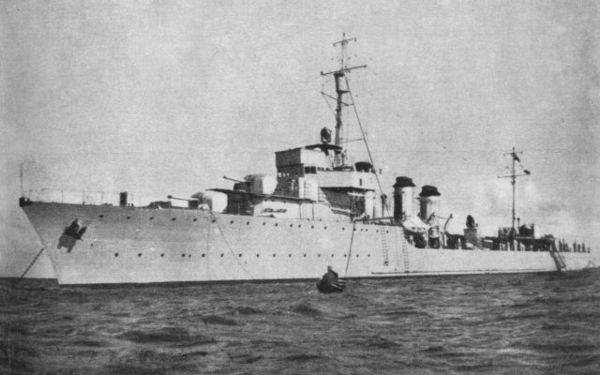
ORP Grom - plans and implementation
ORP Thunder on the road in Gdynia.
In addition to the 80th anniversary of the raising of the flag, May 4 marks another anniversary of the death of the Grom ORP. This was the first such serious loss of the Polish fleet in the battles in the West, and the circumstances of the death of this beautiful ship are being considered to this day. An additional stimulus for these considerations are the surveys of the sunken ship carried out in 2010 by Polish divers from the Baltic Diving Society and the documentation prepared at that time. But in this article, we will look at the origin of the Grom and try to show some of the modifications to the tender documents that led to the final configuration of these ships.
As is known (among those interested), three tenders were announced before the construction of perhaps the most famous pair of Polish destroyers - Grom and Blyskavitsa. The first two (French and Swedish) were unsuccessful, and interested readers are referred to the author's article "In Search of New Destroyers" ("Sea, Ships and Ships" 4/2000) and to the publication of the AJ-Press publishing house "Thunder Type Destroyers", part 1″, Gdansk 2002.
The third tender, the most important, was announced in July 1934. British shipyards were invited: Thornycroft, Cammell Laird, Hawthorn Leslie, Swan Hunter, Vickers-Armstrongs and Yarrow. Somewhat later, on August 2, 1934, a letter of offer and specifications were also issued to a representative of the John Samuel White shipyard in Cowes.
British shipyards at that time were the main supplier of destroyers for export. In 1921-1939, they handed over 7 ships of this class to 25 countries in Europe and South America; another 45 were built at local shipyards to British designs or with the help of the British. The sailors of Greece, Spain, the Netherlands, Yugoslavia, Poland, Portugal, Romania and Turkey, as well as Argentina, Brazil and Chile used destroyers designed by the British (or with their help). Italy, second in this ranking, boasted 10 destroyers built for Romania, Greece and Turkey, while France exported only 3 destroyers to Poland and Yugoslavia (plus 2 licensed ones).
The British readily responded to Polish requests. We are currently familiar with two projects created in response to a tender offered by the shipyards Thornycroft and Swan Hunter; their drawings were featured in the aforementioned AJ-Press publication. Both are ships with a classic destroyer hull, with a raised bow and a relatively low silhouette. There was one artillery position with two 120-mm guns at the bow, and two identical positions at the stern, in accordance with the “Technical Specifications for the Destroyer Project”, issued by the Navy (hereinafter - KMZ) in January 1934. Both projects also have two turrets .
At a meeting on September 4, 1934, the Tender Commission chose the proposal of the British company John Thornycroft Co. Ltd. in Southampton, but the price was too high. In view of the above, in December 1934, negotiations began with the shipyard of J.S. White. At the request of the Polish side, the shipyard made a number of changes to the design, and in January 1935, the chief designer of the White Shipyard, Mr. H. Carey, arrived in Gdynia and saw the Vihra and Burza there. He was presented with Polish opinions collected after several years of operation of these ships, and proposed changes that the Polish side considered necessary.
Unfortunately, we do not yet know the exact appearance of the project presented by the shipyard JS White. However, we can get a certain idea about them, using the sketches found in the documentation of the Polish Optical Factories. PZO designed (and later manufactured) sets of fire control instruments for naval artillery and torpedo launchers for Grom and Blyskavitsa and was apparently informed of the design changes, probably proposed by KMW.